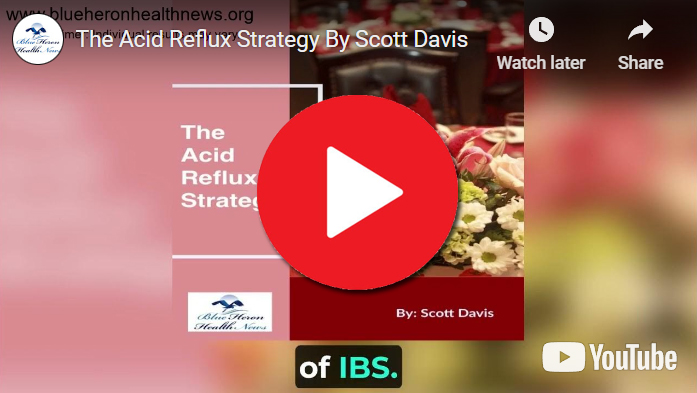
Acid Reflux Strategy™ By Scott Davis According to this eBook, you can start removing the symptoms of acid reflux and other similar problems just by making some changes in your diet, levels of stress, and lifestyle. It will guide you on how to change from the combination of food items to the sleep positions to relieve your problems. It also includes a list of food items you should focus on while shopping for it to find a natural treatment for your symptoms.
How is acid reflux diagnosed?
Acid reflux, also known as gastroesophageal reflux disease (GERD) when it is chronic or severe, is diagnosed through a combination of patient history, symptom assessment, and various diagnostic tests. The goal is to confirm the presence of acid reflux, determine its severity, and rule out other conditions with similar symptoms. Here are the common methods used to diagnose acid reflux:
1. Medical History and Symptom Assessment
- Patient Interview: The healthcare provider will ask about the patient’s symptoms, including the frequency, duration, and severity of heartburn, regurgitation, chest pain, and any associated symptoms like cough, hoarseness, or difficulty swallowing (dysphagia).
- Symptom Triggers: Discussion about potential triggers, such as certain foods, beverages, or medications, as well as lifestyle factors like smoking, alcohol consumption, and eating habits.
2. Physical Examination
- General Examination: The doctor may perform a general physical examination, checking for signs of discomfort or pain that might indicate GERD.
- Assessment of Related Symptoms: This might include examining the throat for signs of inflammation or hoarseness, which can be related to acid reflux affecting the vocal cords and throat.
3. Diagnostic Tests
1. Upper Endoscopy (Esophagogastroduodenoscopy, EGD):
- Procedure: An endoscope—a flexible tube with a light and camera—is inserted through the mouth to examine the esophagus, stomach, and upper part of the small intestine (duodenum).
- Purpose: This test can detect inflammation, ulcers, strictures, or Barrett’s esophagus, a condition in which the tissue lining the esophagus changes due to repeated exposure to stomach acid. Biopsies can also be taken if necessary.
2. pH Monitoring:
- Types: There are two main types of pH monitoring: catheter-based and capsule-based (Bravo pH monitoring).
- Catheter-based pH Monitoring: A thin tube is inserted through the nose into the esophagus to measure acid levels over 24 hours. The patient records symptoms and activities to correlate with acid exposure.
- Bravo pH Monitoring: A small capsule is attached to the lining of the esophagus during an endoscopy, which measures acid exposure and transmits data to a receiver worn by the patient for several days.
- Purpose: This test is the most direct way to confirm acid reflux by measuring the frequency and duration of acid exposure in the esophagus.
3. Esophageal Manometry:
- Procedure: A thin, pressure-sensitive tube is passed through the nose into the esophagus to measure the strength and coordination of esophageal muscles during swallowing.
- Purpose: This test evaluates the function of the esophagus and the lower esophageal sphincter (LES). It helps diagnose motility disorders and assess LES function, which can contribute to GERD.
4. Barium Swallow (Upper GI Series):
- Procedure: The patient drinks a barium solution, which coats the lining of the esophagus, stomach, and duodenum. X-rays are then taken to visualize the passage of the barium.
- Purpose: This test can show structural abnormalities such as strictures, hiatal hernias, or abnormalities in the shape or motility of the esophagus.
5. Impedance Monitoring:
- Procedure: This test can be combined with pH monitoring. A catheter is inserted into the esophagus to measure the flow of liquids and gases.
- Purpose: It helps detect non-acidic reflux episodes and can provide a more comprehensive understanding of reflux episodes that may not be acidic but still cause symptoms.
4. Response to Treatment (Empirical Therapy)
- Proton Pump Inhibitors (PPIs) Trial: In some cases, a trial of acid-suppressing medications, such as PPIs, may be prescribed. If the patient’s symptoms improve significantly, it can support a diagnosis of GERD. This is often used as an initial diagnostic approach for patients with typical symptoms and no alarming signs.
- Lifestyle Modifications: Patients may be asked to make lifestyle changes, such as elevating the head of the bed, avoiding certain foods, or losing weight, to see if these changes alleviate symptoms.
5. Other Considerations
- Differential Diagnosis: Conditions with similar symptoms, such as peptic ulcers, gallbladder disease, esophageal motility disorders, and cardiovascular issues, may need to be ruled out. This may involve additional testing or specialist referrals.
Conclusion
Diagnosing acid reflux involves a thorough evaluation of symptoms, medical history, and, if necessary, a range of diagnostic tests to confirm the presence of GERD, assess its severity, and rule out other conditions. The choice of diagnostic tests depends on the patient’s symptoms, risk factors, and response to initial treatments. If you suspect you have acid reflux or GERD, consult with a healthcare provider for a comprehensive evaluation and appropriate management.
Acid Reflux Strategy™ By Scott Davis According to this eBook, you can start removing the symptoms of acid reflux and other similar problems just by making some changes in your diet, levels of stress, and lifestyle. It will guide you on how to change from the combination of food items to the sleep positions to relieve your problems. It also includes a list of food items you should focus on while shopping for it to find a natural treatment for your symptoms.
